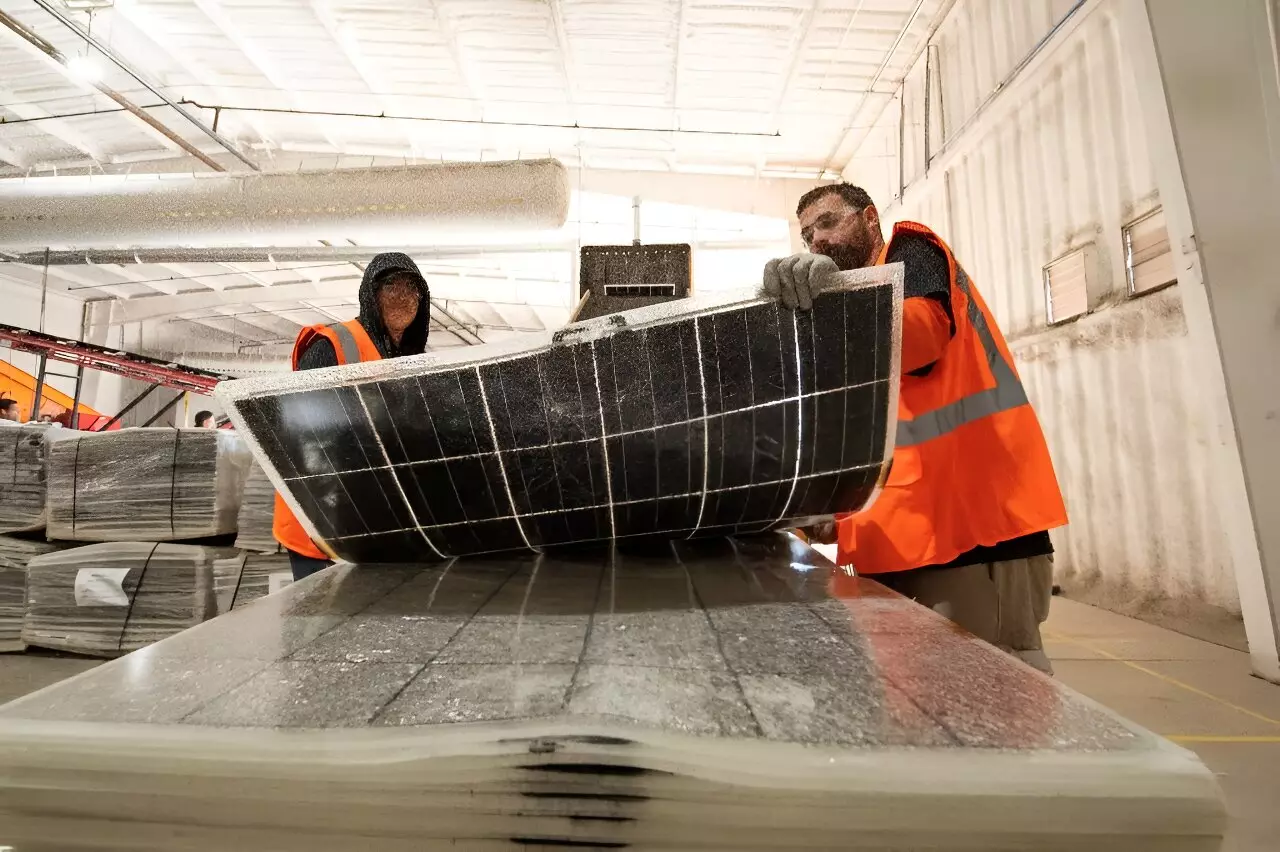As the world shifts towards renewable energy sources, solar panels have become increasingly popular for their ability to harness the power of the sun. The United States, in particular, has seen a surge in solar panel installations, with states like California leading the way in transitioning to greener energy production. However, as the first wave of solar installations reaches the end of its lifespan, a new challenge arises: what to do with old or worn-out solar panels?
The Impending Tsunami of Solar Panels
With an expected lifespan of around 30 years, the number of solar panels reaching their retirement age is expected to increase significantly in the coming years. Adam Saghei, the CEO of We Recycle Solar, describes this influx as a “tsunami of solar panels coming back into the supply chain.” While solar energy is touted as a sustainable form of energy, the industry now faces the task of responsibly handling the retirement of these assets.
Saghei proposes reusing and repurposing solar panels to mitigate the landfilling of these valuable resources. Up to five percent of panels still have potential use with minor defects or damage incurred during transport or installation. These panels can be refurbished and directed to other markets, often abroad. However, for panels that are no longer functional, alternative solutions are required.
“We’re doing what’s called urban mining,” Saghei explains. His company has developed a process to recover valuable materials from non-functional solar panels. This process involves the recovery of silver, copper, aluminum, glass, and silicone, all of which hold value in the open market. While the reuse of metals might be obvious, the potential uses for silicone and glass are less visible but nonetheless intriguing. Silicone and glass can be repurposed for applications such as sand traps on golf courses, as a sandblast mix, or for creating stones or glass mix for outdoor fireplaces. With their plant’s capacity to process up to 7,500 panels daily, We Recycle Solar achieves an impressive recovery rate of up to 99 percent.
The Logistics Challenge
Meng Tao, an expert in sustainable energy infrastructure at Arizona State University, identifies the challenge of developing an efficient lifecycle for solar panels. As the United States commits to reducing reliance on fossil fuels, the installation of solar panels is expected to peak in about two decades. However, the logistical challenges of panel distribution and recycling pose significant obstacles. The cost of transporting panels from various rooftops to recycling centers can be prohibitively expensive. Additionally, in the United States, the end user is responsible for the cost of removal and recycling, making landfilling a more attractive option for many households. Tao emphasizes the need for policy support to bridge the gap between consumer willingness to pay and the true lifecycle cost of solar panels.
The Cost of Recycling
Recycling solar panels is not without its costs. It requires labor and energy-intensive processes, making it a less appealing business venture for many. Saghei acknowledges the challenges but believes that recovering materials from old solar panels for use in new ones is a profitable and viable proposition. He foresees the potential for growth in markets that utilize these raw commodities, allowing for a sustainable cycle in the industry.
A Circular Economy for Solar Panels
As the world embraces renewable energy, the issue of responsibly handling the retirement of solar panels becomes increasingly important. To build a truly sustainable and circular economy, proper planning and investment are required. The reuse and repurposing of still-functional panels, as well as the recovery of valuable materials from non-functional panels, are essential elements of a comprehensive approach to solar panel recycling. Policy support and cost-sharing initiatives can aid in the creation of a more economically viable and environmentally friendly process.
A Bright Future
While the challenge of recycling old solar panels may pose logistical and financial hurdles, it also presents an opportunity for innovation and entrepreneurship. As the industry continues to scale up, finding sustainable solutions for the retirement of solar panels will become increasingly necessary. By developing efficient recycling methods and creating incentives for responsible disposal, the solar energy sector can continue to thrive while minimizing its environmental impact.



Leave a Reply